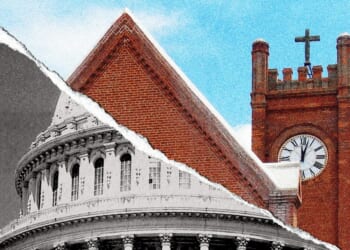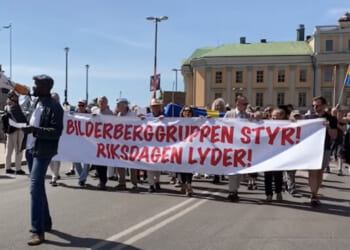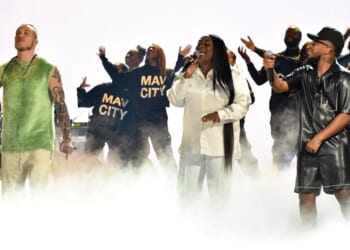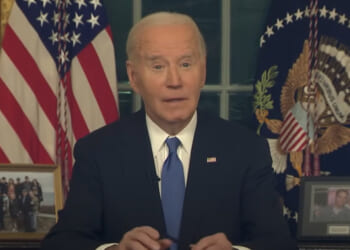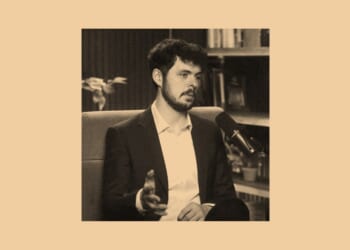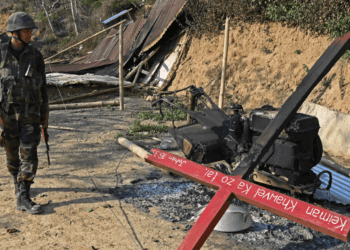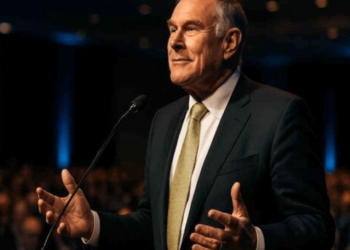Let’s discuss what happened in Alaska last week when President Donald Trump met with Russin President Vladimir Putin. The encounter was brief, productive and historic, although one might not realize it based on conventional, ill-informed Western media coverage. Unsurprisingly, most Western media botched their coverage, although for many outlets that is exactly their mission.
It helps to know what to look for with things like this. And last week in The Morning Reckoning, I previewed the Trump-Putin get-together and discussed the strategic importance of Alaska. Now, post-event, we can look back and connect some dots. We’ll get into what happened and what it means, where it can lead, and how you might make some money.
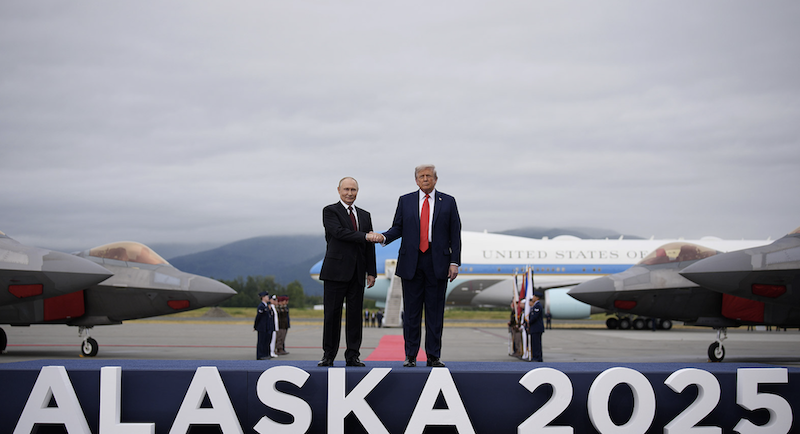
Presidents Putin and Trump; red carpet and F-22s. Screen grab, courtesy BBC.
But first, let’s discuss the title of this article… “Seventeen Moments…”
Seventeen Moments of Spring
I suspect that most Americans – and Westerners in general – don’t immediately pick up on the cultural reference of this “Seventeen Moments” angle. That’s okay, I’ll explain it anon.
Meanwhile, I suspect that pretty much anyone who came of age in the Soviet Union (i.e., USSR, pre-1991) knows what I mean here. I also suspect that most younger Russians are familiar with the term. Because when a Russian sees the words “Seventeen Moments,” there’s a near-instant association with one of the most famous espionage dramas in the history of the former USSR, if not modern Russia. And Russians know a few things about espionage.
Briefly, this story begins in 1973 with a 12-part television series that aired across the USSR, entitled Seventeen Moments of Spring, a dramatization of a novel of the same name by Soviet writer Yulian Semyonov. The plot revolves around a fictional Soviet agent who adopted the German name Otto von Stierlitz (played by the late actor Vyacheslav Tikhonov). The Russian went to Germany in 1927 as a deep plant, a long-term spy. And over time he rose through the ranks of that nation’s intelligence services to become a senior officer in the N@zi Party.
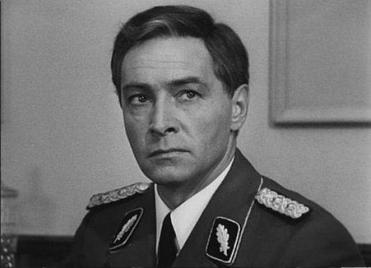
Standartenführer Otto von Stierlitz, portrayed by the late Vyacheslav Tikhonov. Courtesy Mosfilm.
This Stierlitz fellow was no mere Soviet version of a James Bond action movie figure, fighting bad guys in blazing shootouts while wooing lovely ladies. No, the Soviet agent was quiet, reserved, deeply thoughtful, and in fact a former physics student who studied quantum mechanics in university. He was also a master of several languages (certainly German!), with deep insight into human psychology. In other words, he was an ace spy.
In the first few episodes, the story-arc established Stierlitz as a credible, effective operative. Then the backstory transitioned to the spy’s big caper during the last year of World War II. In the TV show, Stierlitz masterfully disrupted a German attempt to sue for a separate peace with the U.S. and Great Britain, while prolonging Germany’s war against the Soviet Union. There’s an element of historic truth to this plot line, in that German factions actually approached the U.S. to inquire about ending the war in a manner that left the Soviets out of the loop. (And the U.S. side turned them down cold.)
When the show first aired in the Soviet Union in 1973, it was a smash hit. Each weekly episode drew more and more viewers. Indeed, during showtimes toward the end of the series, streets and subways of every major Soviet city emptied out as people remained at home to watch. In fact, the Soviet energy ministry ordered increased electricity output during showtimes, to balance the load of so many millions of TV sets drawing power simultaneously.
Like greased lightning, the term “Seventeen Moments” became a Soviet/Russian cultural meme. People copied aspects of dialogue, clothing, mannerisms, and even the background music. The phenomenon is comparable, perhaps, to how the movie The Godfather rapidly became an American cinematic icon.
Okay, you might think. Interesting, but why bring it up? The answer dates to 1973 as well, when a young university student in Leningrad watched the “Seventeen Moments” series. The story (i.e., from what I’ve been told – BWK) is that this young man was captivated and inspired by the thoughtful intellect, iron discipline, singular mission focus, and unswerving patriotism of Stierlitz, the Soviet agent who sacrificed so much of his life for the interest of his nation.
And then, with Soviet spy Stierlitz as his motivation, a certain Vladimir Putin approached one of his professors at the University of Leningrad and expressed a desire to join the Soviet intelligence service, the KGB.
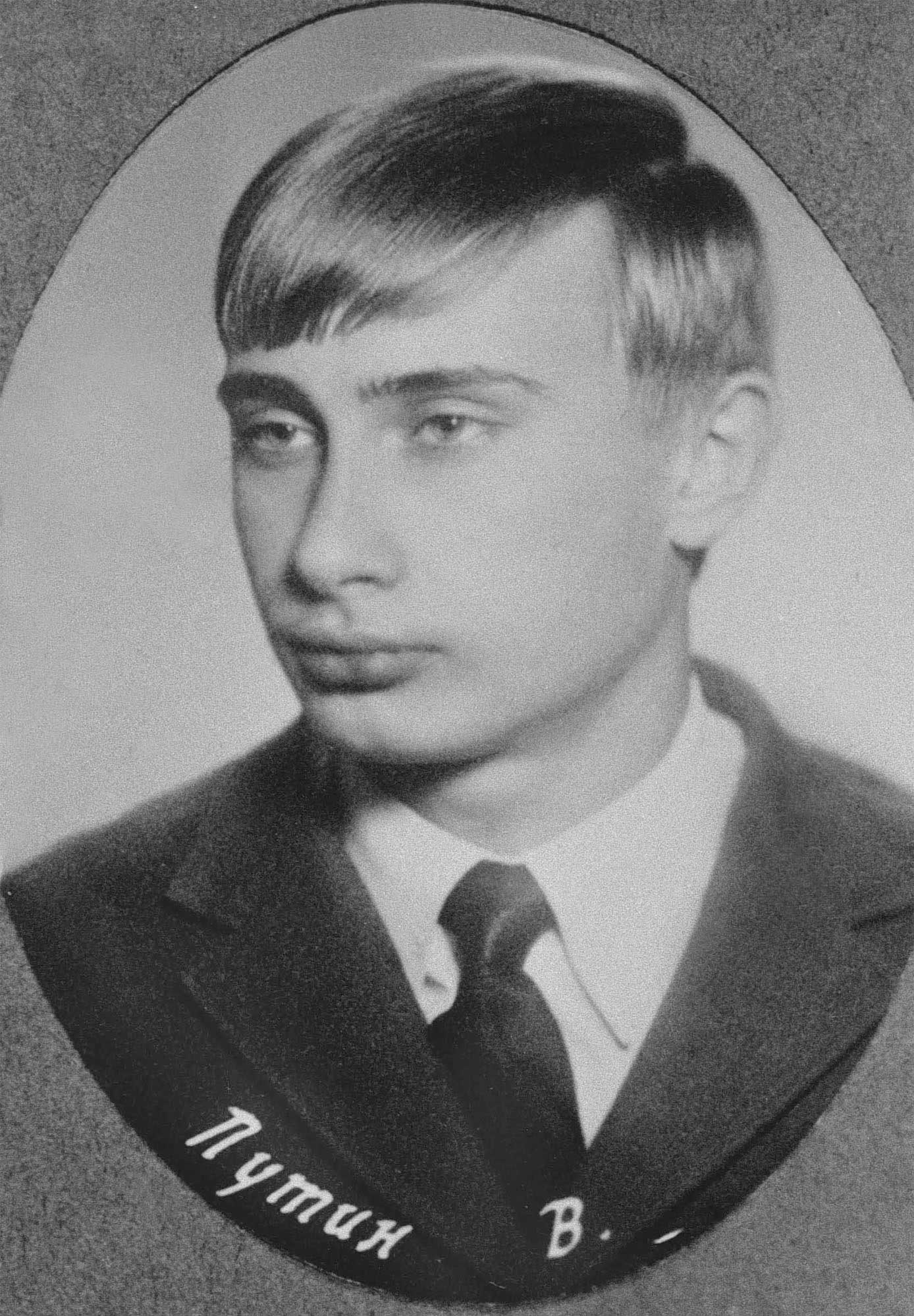
Vladimir Putin as young university man. Courtesy Kremlin.Ru.
Now of course, not just anyone could join the Soviet KGB. Sure, certain individuals had perhaps a leg up, say the son or daughter of current agents, or young people with connections via military or diplomatic circles. But a working-class kid from a housing project on the far side of the tracks in Leningrad? Well, maybe… but this Tovarish had to be thoroughly vetted. And eventually, young Mr. Putin received a letter in his university mail, instructing him to go to a certain room at a certain time to speak with someone.
And the rest… Is history.
Welcome to Alaska
Putin has now been at the top of the Russian power chain since 1999. And after 26 years of running that country, he certainly had some things to discuss face to face with President Trump last week in Alaska. But the first big point to make is that the Russian president flew into U.S. airspace via diplomatic invitation and under the highest level of military-scale protection; indeed, escorted to his destination by American F-35 fighter jets.
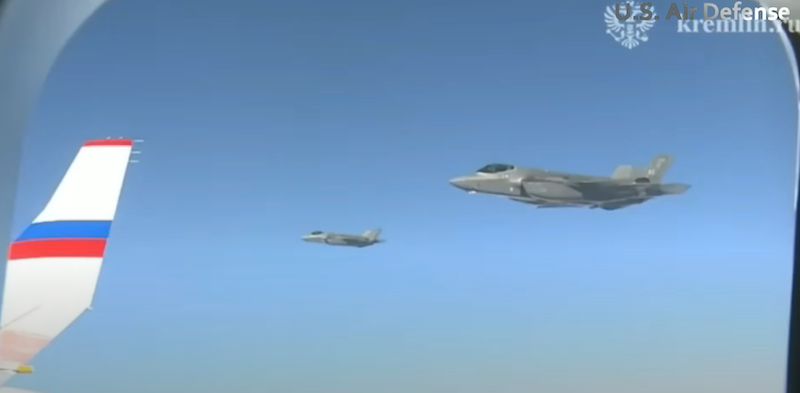
U.S. Air Force F-35s escort Russian presidential jet. Courtesy Kremlin.Ru.
Meanwhile, Putin is reviled in many circles across the West. Some politicians and media figures call him a “thug,” a “murderer,” a “war criminal,” and much else. In fact, there’s an arrest warrant for him, courtesy of the International Criminal Court (ICC).
And yet there he was – and you can call him “Mr. President” – flying with an American escort, headed to meet U.S. President Trump. Then after landing at Joint Base Elmendorf-Richardson, outside of Anchorage, the U.S. President and America’s Air Force staged an impressive flyby with a B-2 bomber and four more F-35s, all with astonishing precision, inside a time-window of under about 15 seconds.
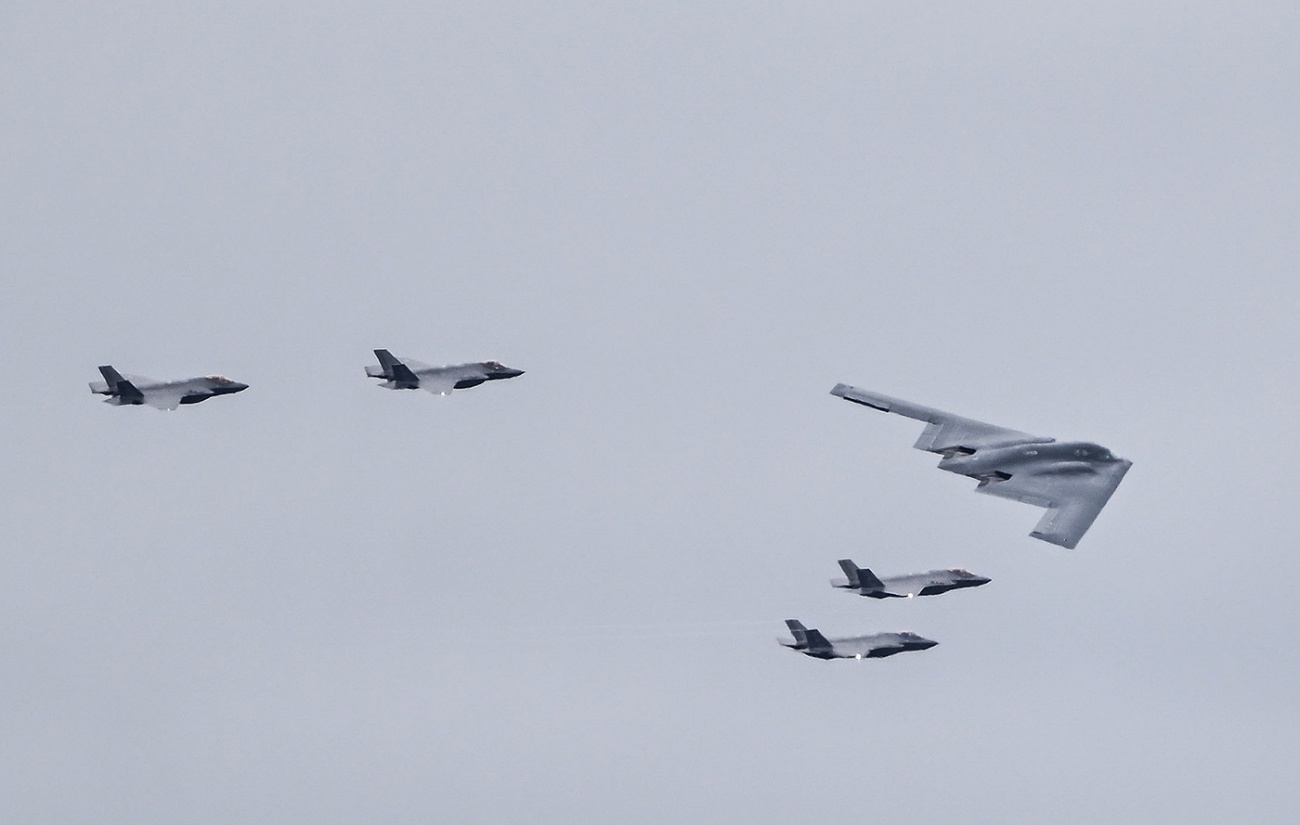
USAF B-2 and F-35s stage perfectly timed flyby for Putin. Courtesy U.S. Air Force.
Okay, yes… Some critics say that the bomber-fighter airshow was a bit much. It was a power play. It was unnecessary trolling by Trump.
Then again, look at that flyby as a form of military respect by the U.S. towards Russia. The roots of such things date deep into ancient times, when kings and emperors paraded their knights and horses before each other. And indeed, the airpower message from Trump is even clearer, coming about two months after seven of those B-2s dropped massive ordnance right down the ventilation shafts of an Iranian nuclear plant buried under a mountain.
And perhaps Putin was thinking, “Hey, Donald. You want an airshow? Just wait until you arrive in Moscow!”
Now, Let’s Talk
Originally, the schedule was for Trump and Putin to meet one-on-one (with translators), to discuss Ukraine together for about an hour, and then break for lunch. Instead, Trump and Putin each came together in the company of senior aides and advisers, and the meeting went on for over three hours.
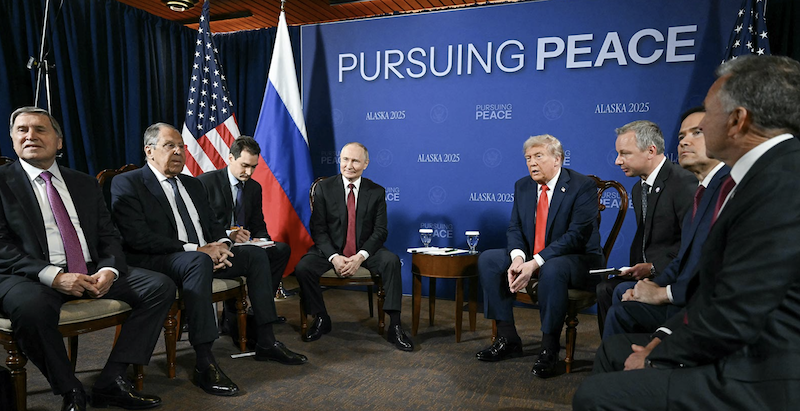
Putin, Trump and respective aides and advisers. Screen grab from WhiteHouse.Gov.
And they skipped lunch, which was too bad because those U.S. Air Force chefs and culinary specialists are legendary for serving up ungodly great chow when the occasion merits.
Then came the “press conference,” but without the two heads of state taking any questions from the press, which is just as well because much of the Western press is rude and boorish, and doesn’t have a clue what questions to ask. So, Putin gave a relatively short talk, which I’ll address in a moment; and Trump said just a few words, which I’ll also discuss.
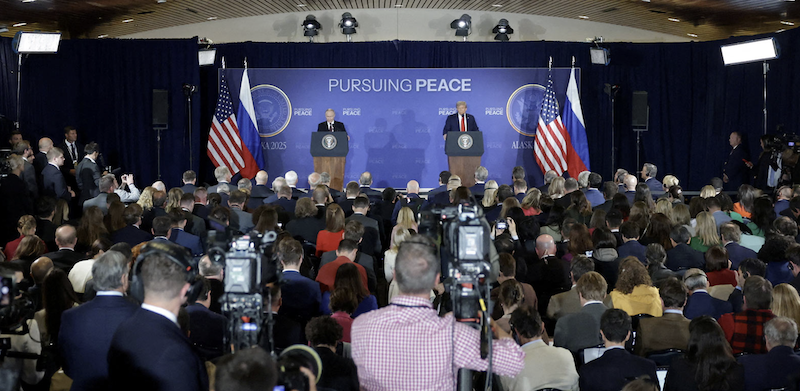
Putin and Trump pursue peace, right? Screen grab, WhiteHouse.Gov.
The Alaska Takeaways, or… “What Would Stierlitz Do?”
First remember that, long ago, Putin admired that fictional Soviet agent Stierlitz, with his deep intellect, iron discipline, singular mission focus, and unswerving patriotism. The lesson is to take inspiration when and where you find it, and be effective in pursuing your national interests. And now consider what just happened…
President Putin visited America. He walked on U.S. soil (covered by a red carpet, no less), and even better it’s “Historic Russian Alaska.” In Russia, this Alaska visit is far more significant than a mundane trip to New York for some meaningless meeting at the United Nations. In other words, the Putin-as-pariah argument is finished, and the rest of the world took notice.
Right now, one can almost hear the sound of crumbling walls of global-scale sanctions against Russia, Russian businesses, innumerable Russians and certainly Putin himself. Whatever happens with Ukraine in the weeks or months to come, Trump-Putin have laid the groundwork to begin a rebuilding process between the U.S., the West, and Russia. There’s money to be made.
In this same vein, people who expected “a deal” in Alaska to end the Ukraine military operation instead saw the beginnings of a peace process. That is, after meeting with Putin, Trump announced that peace is possible, but Ukraine must give up land and never join NATO. And these two elements have been core Russian positions all along. So now, the peace-ball is in Ukraine’s court, and if the Kiev government fails to make accommodations Trump is positioned to shut off all U.S. funding and weapon supply, and other support.
No doubt, Putin was blunt with Trump about military realities of the Ukraine conflict. During both the campaign of 2024 and over his seven months in the White House, Trump has made some astonishingly wrong-headed comments about Russian losses and the tactical-operational conduct of the fight. And likely, up in Alaska Putin set him straight. That is, Ukraine’s battle losses are massive, while Russian casualties are not enough to alter the key strategic point that Russia is winning and will prevail, sooner or later.
Meanwhile, from the Russian standpoint, the Ukraine conflict is not only about defeating a hostile regime in Kiev. It’s a fight between Russia and NATO. And in that sense, the Western approach to understanding what’s happening misses a critical point, that Russia is more interested in destroying NATO combat power than in flashy seizures of land.
At this stage of the Ukraine conflict, it’s clear that NATO (and the U.S. in particular) have reached the limits of their collective ability to feed weapons and ammunition into the military meatgrinder. The U.S. and Western allies simply lack the industrial capacity, let alone political will and finances, to sustain a long-term war. And meanwhile, Russia has geared up into a wartime economy that turns out ample supplies of weapon systems, ammunition, and energy to power it all. It reflects the old maxim that military power is first derivative of industrial power, and Russia has deep industrial power.
Another way to say it is that the Ukraine war is over, except for more fighting, dying, operational maneuver by Russian forces, and eventual total battlefield defeat of Kiev. So perhaps now, post-Alaska, it’s time for the West to salvage what it can from its misadventure in Ukraine. And Trump is dealing with Putin’s reality and Realpolitik, versus a fanciful American Neocon narrative that masquerades as a strategic plan.
A few last points include how Putin made numerous references to past U.S.-Soviet cooperation during World War II. Indeed, on his trip to Alaska, Putin stopped at Magadan in Russia’s Far East, which was part of the Lend-Lease air bridge during the war. And there, he honored several graves of fallen American pilots and aircrew. Then at Elmendorf, Putin visited a cemetery and laid flowers on the graves of fallen Soviet personnel from the war.
This kind of memorial and remembrance is not merely some sort of diplomatic boilerplate, let alone a sentimental stunt. No, it’s a highly visible demonstration of respect for history, from one superpower toward another. And moves like this lay new foundation stones upon which to build future bridges.
Then came a point in Alaska when Putin commented that Russia would never have invaded Ukraine in 2022 if Trump had been president. Glaringly, Putin mentioned “the previous president” (Joe Biden of course) and essentially tossed the entire Biden administration under the proverbial bus as incompetent grifters. Of course, Putin must be thoroughly aware of the rank corruption and money-laundering that occurred between Ukraine and numerous U.S. players over the past 15 years or so. And this will doubtless play out over time.
All of this, and much more, from a man who was inspired to pursue a career by watching a TV show about a spy, back in 1973. Stierlitz the spy was fictional, to be sure, but his character inspired young Putin to take the first steps of a journey that has led, over half a century, from Leningrad University to meeting President Trump in Alaska.
And that’s quite a legacy for those “Seventeen Moments.”


